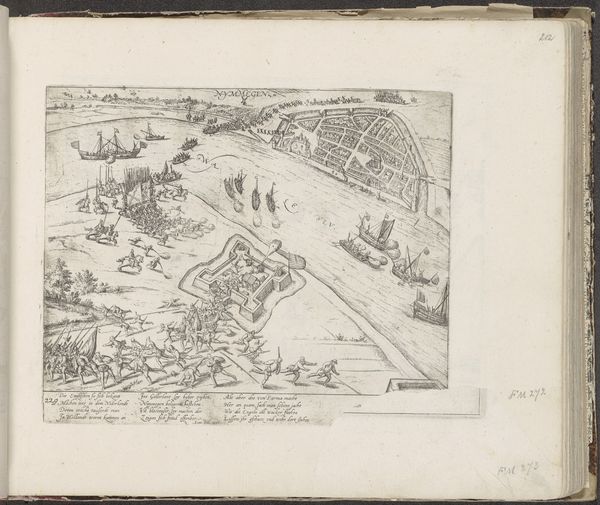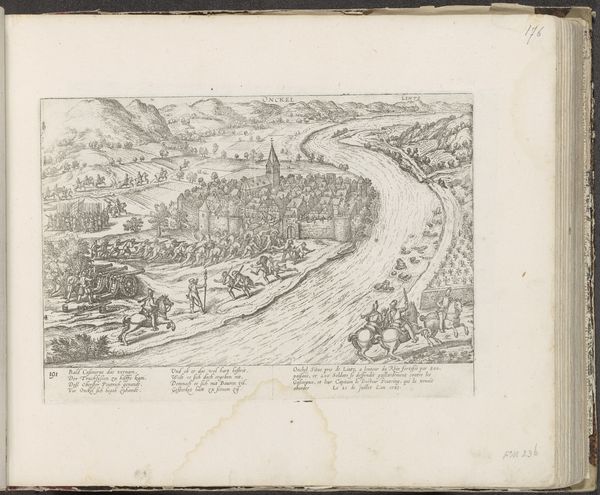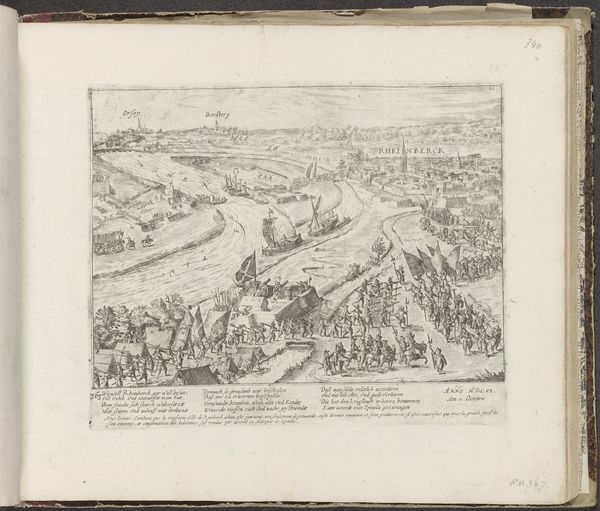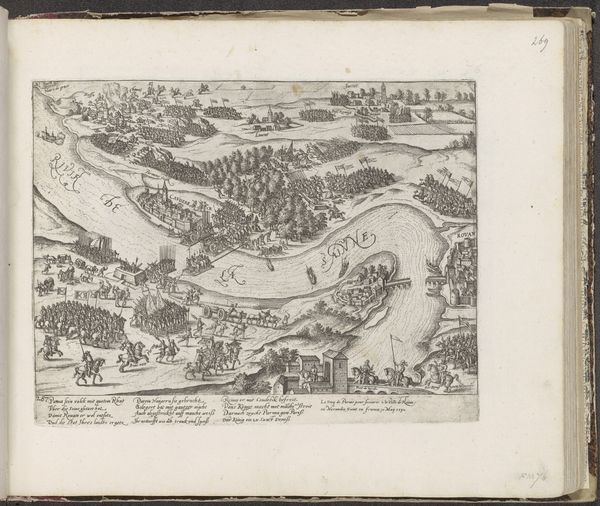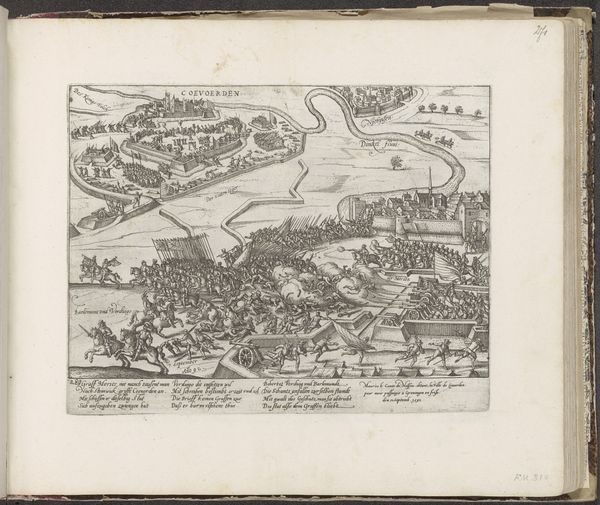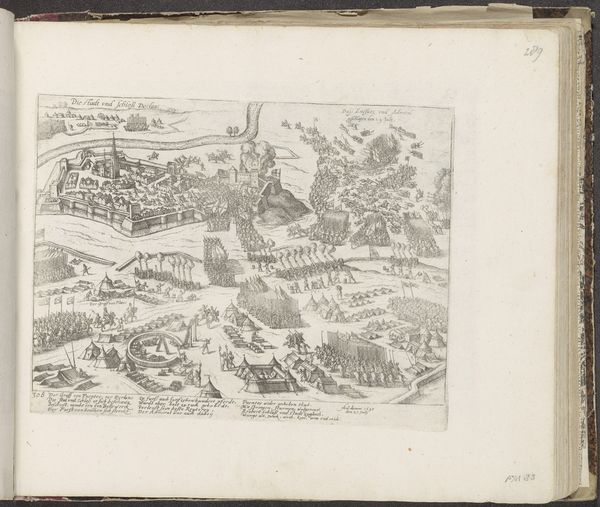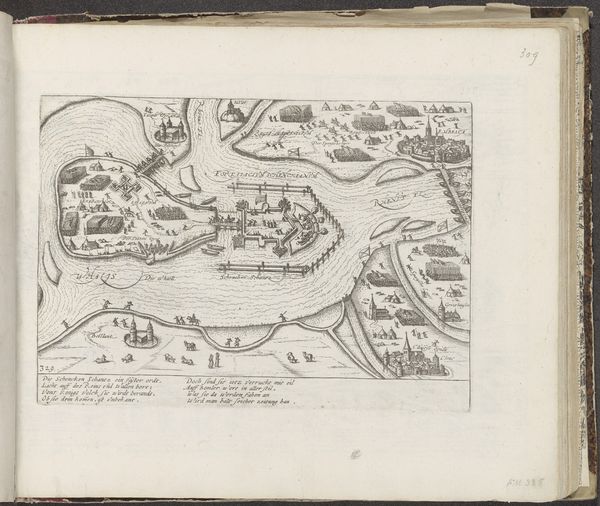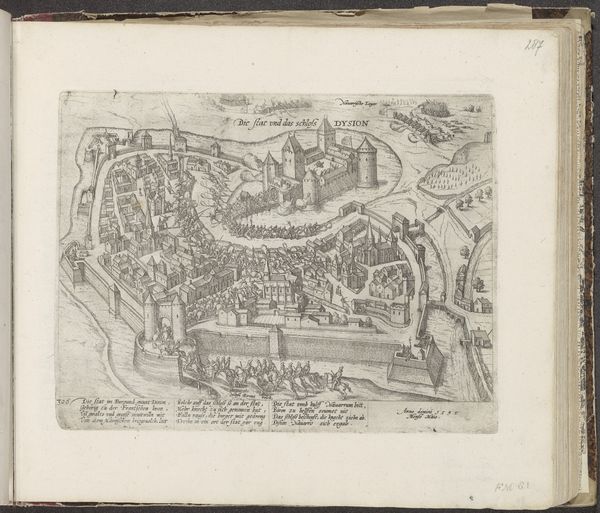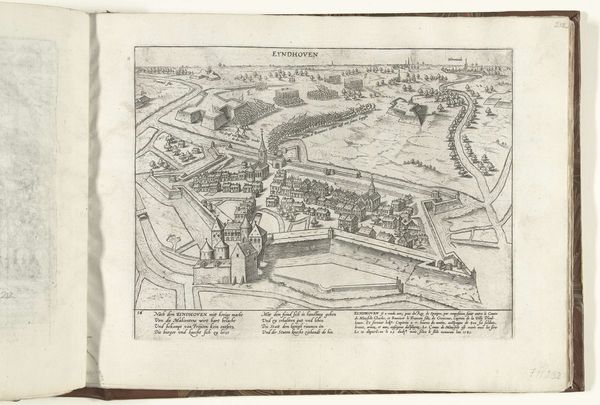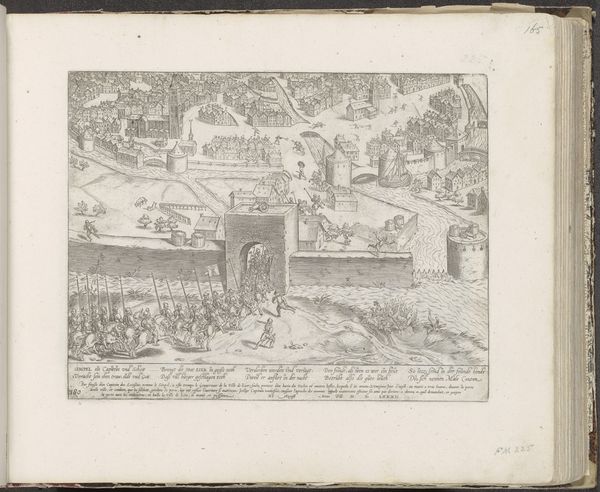
drawing, print, ink, engraving
#
drawing
# print
#
ink
#
cityscape
#
history-painting
#
northern-renaissance
#
engraving
Dimensions: height 213 mm, width 278 mm
Copyright: Rijks Museum: Open Domain
Curator: Here we have a striking bird's-eye view of Eindhoven under siege, dating from around 1587 to 1591. Frans Hogenberg captured this tense moment using ink as his medium, resulting in both a drawing and print—an engraving, specifically. Editor: My initial reaction is this image is strangely serene, considering it depicts a siege. It's all so orderly, the lines so crisp. You almost forget the implied violence. Like an urban planning diagram gone slightly awry. Curator: That orderliness is deliberate, I think. Hogenberg was very interested in communicating historical and political narratives through a structured visual language. The siege itself is presented as a key event, almost a symbolic disruption, which reveals much about Northern Renaissance attitudes toward urban spaces. Editor: A disruption, definitely. It reminds me how often cities—intended as monuments of stability—become stages for conflict, their walls acting as both protection and constraint. See how the line of soldiers weaves into the gates, disrupting the town’s geometry like a snake slithering through perfectly arranged blocks. Curator: Precisely. And beyond the physical layout, consider what the siege represents psychologically. The enclosed space of the city, a symbol of communal identity, being breached and threatened, represents social and cultural upheaval, echoing deeper fears and anxieties of the time. Editor: The sharp detail juxtaposed with the wider perspective creates this disorienting sense of being both inside and outside of history. It feels both immediate, like it’s happening now, and distant, like a diorama viewed through museum glass. Does the perfect grid accentuate feelings of vulnerability for you? Curator: Absolutely. Hogenberg is revealing Eindhoven, exposing both its infrastructure and its vulnerability. That tension between revelation and vulnerability is core to the visual rhetoric of siege imagery across the Northern Renaissance. There is a feeling that the viewer, even centuries later, becomes implicated in the event. Editor: In some ways it is a celebration of resilience, then. A snapshot of one of those moments where our constructed world meets harsh reality, forcing reinvention and perseverance. A city might fall, but as symbols show, they can always rise again. Curator: Indeed, symbols of resistance in their own right! I appreciate that even today, we can revisit these cityscapes and glean a sense of the cultural anxiety etched into the very structures that shaped it.
Comments
No comments
Be the first to comment and join the conversation on the ultimate creative platform.
